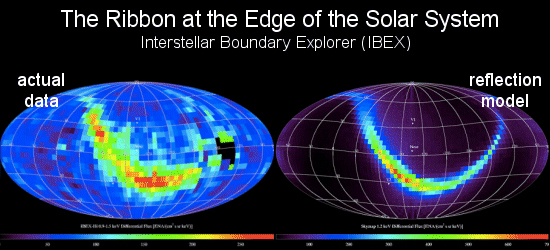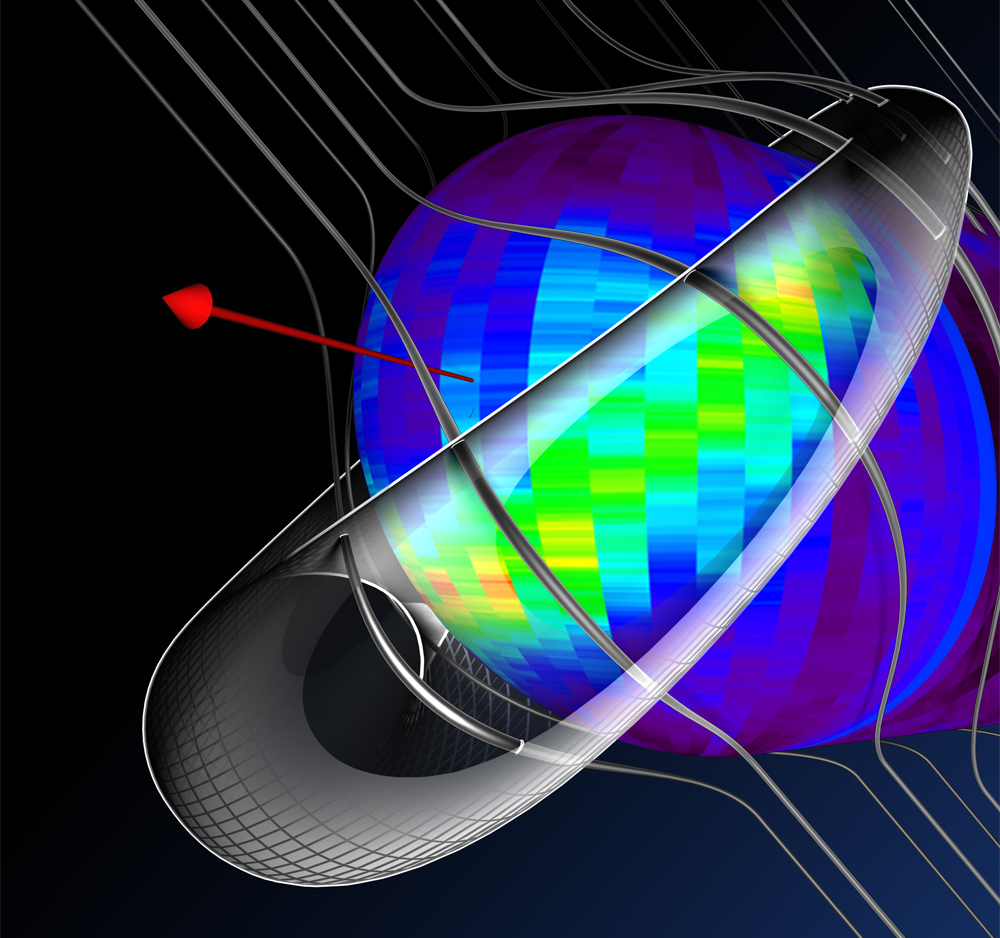Photos: NASA's IBEX Probes Solar System's Edge
Head-On Crash Spotted Between Solar Wind and Earth's Magnetic Field
The IBEX spacecraft has found that Energetic Neutral Atoms, or ENAs, are coming from a region just outside Earth's magnetopause where nearly stationary protons from the solar wind interact with the tenuous cloud of hydrogen atoms in Earth's exosphere.
Model of Earth's Magnetic Field Lines
This image shows the first-ever view of the magnetospheric plasma sheet in profile, as seen by the Interstellar Boundary Explorer (IBEX) from outside the magnetosphere. It shows the densest portions of the plasma sheet, largely following the modeled magnetic structure.
Ribbon at the Edge of the Solar System
NASA's IBEX (Interstellar Boundary Explorer) spacecraft discovered a mysterious giant ribbon at the edge of the solar system. The mystery may have been solved. "We believe the ribbon is a reflection," says Jacob Heerikhuisen, a NASA Heliophysics Guest Investigator from the University of Alabama in Huntsville. "It is where solar wind particles heading out into interstellar space are reflected back into the solar system by a galactic magnetic field."
IBEX Model of the Interstellar Magnetic Fields
A model of the interstellar magnetic fields – which would otherwise be straight -- warping around the outside of our heliosphere, based on data from NASA's Interstellar Boundary Explorer. The red arrow shows the direction in which the solar system moves through the galaxy.
Cosmic Ray Intensities Compared With Predictions
Cosmic ray intensities (left) compared with predictions (right) from NASA's IBEX spacecraft. The similarity between these observations and predictions supports the local galactic magnetic field direction determined from IBEX observations made from particles at vastly lower energies than the cosmic ray observations shown here. The blue area represents regions of lower fluxes of cosmic rays. The gray and white lines separate regions of different energies—lower energies above the lines, high energies below.
Breaking space news, the latest updates on rocket launches, skywatching events and more!

Space.com is the premier source of space exploration, innovation and astronomy news, chronicling (and celebrating) humanity's ongoing expansion across the final frontier. Originally founded in 1999, Space.com is, and always has been, the passion of writers and editors who are space fans and also trained journalists. Our current news team consists of Editor-in-Chief Tariq Malik; Editor Hanneke Weitering, Senior Space Writer Mike Wall; Senior Writer Meghan Bartels; Senior Writer Chelsea Gohd, Senior Writer Tereza Pultarova and Staff Writer Alexander Cox, focusing on e-commerce. Senior Producer Steve Spaleta oversees our space videos, with Diana Whitcroft as our Social Media Editor.





